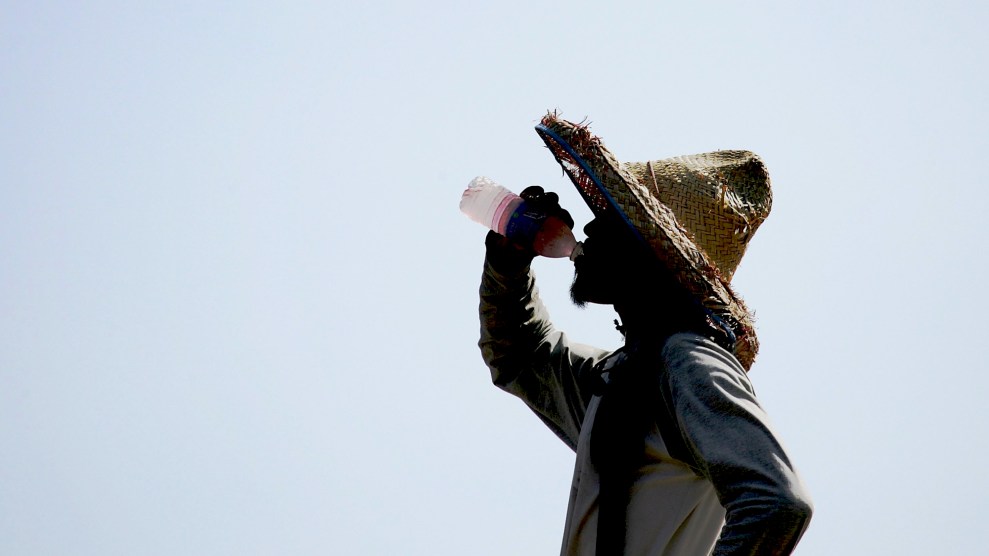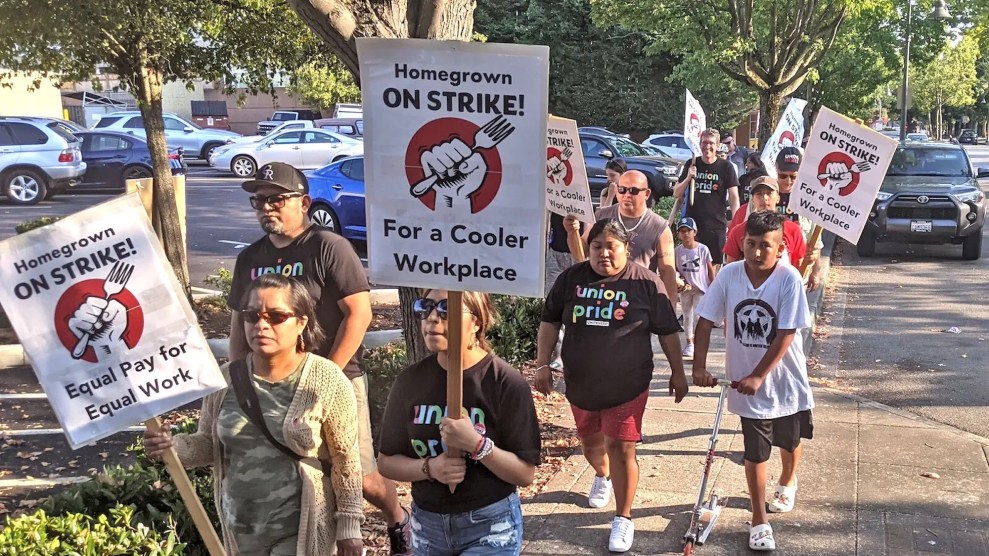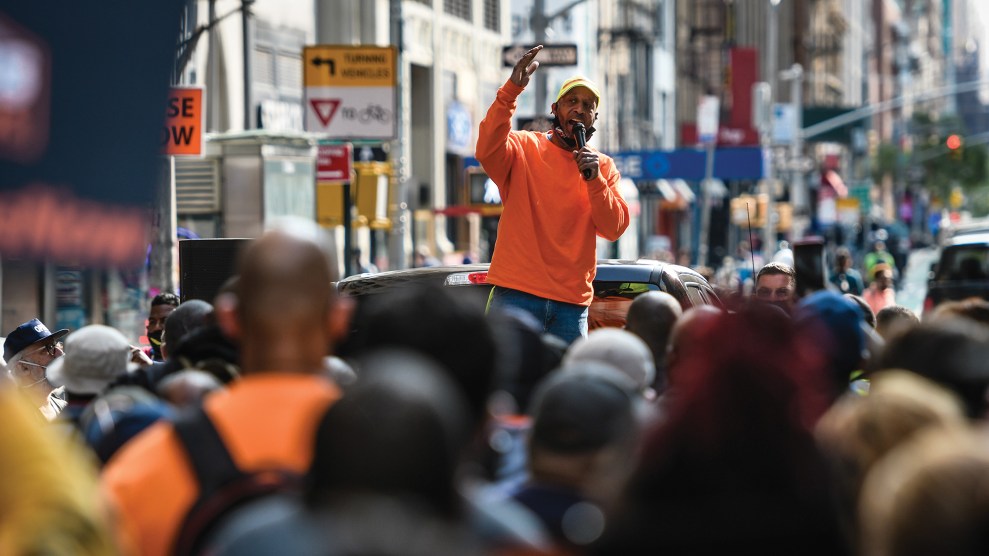
Justin Sullivan/Getty
When a man with painful cystic acne came to dermatologist Eva Rawlings Parker for help in a Nashville clinic, she couldn’t prescribe him doxycycline or minocycline, two medications she’d typically use to treat this condition. This is because the man was a roofer, says Parker, and these medications would have impacted his ability to tolerate heat.
Parker’s patient was far from alone. Other common medications for physical health, like beta blockers, can impact people’s ability to handle heat. Many medications for mental health do, too.
Conventional wisdom tells people with conditions that make them unusually vulnerable to the sun, like the autoimmune disorder lupus, or are on medications that lead to heat sensitivity, to avoid staying outside when the sun is at its strongest.
“We know that workers have been dying because of chronic conditions that accumulate through heat stress over many years and decades that lead to shorter life spans.”
But for the one-third of US workers who must spend regular time outdoors, that advice bursts into flames. For some, such as farmworkers, hours and hours of heat exposure, with minimal or no reprieve, are just part of the job. Increasing heat waves and more frequent wildfires point to the need to find real solutions for outdoor workers—and highlight how labor and climate change are intertwined.
Alongside heat waves getting worse and longer, which can trigger mental health episodes, more and more people are taking antipsychotic medications or antidepressants like SSRIs. Even before the toll of the Covid pandemic, the CDC estimated that more than one in eight adults took antidepressants. Since the beginning of the Covid-19 pandemic, SSRI prescriptions for adolescents and young adults has increased by 63 percent.
Edward Flores, faculty director of the Community and Labor Center at the University of California, Merced, specializes in the conditions of low-wage and immigrant workers in California. He says the need for heat safety policy reform is acute. “We know that workers have been dying,” Flores says, “because of chronic conditions that accumulate through heat stress over many years and decades that lead to shorter life spans.”
Parker, the dermatologist, is acutely aware of how heat can trigger or worsen skin problems. She is co-chair of the American Academy of Dermatology’s group on climate change and environmental issues, and was an author of a 2023 review on the ways climate change can contribute to dermatological issues, including triggering flares of conditions like hidradenitis suppurativa—which causes painful lumps deep in a person’s skin—and skin cancer.
“The skin is really probably our most climate-sensitive organ, also a very large and complex organ, and it’s really the major interface to the environment,” says Parker, who is also a Vanderbilt University Medical Center professor. Her experience with patients, many of whom are low-income and migrant workers, lets her see firsthand just how challenging giving practical health advice can be in a warming world.
People’s core temperature can rise much more quickly on SSRIs, for instance, putting them at increased risk of heat stroke. And there’s the challenge, says Rupa Basu, a heat epidemiologist with the California Office of Environmental Health Hazard Assessment: “It’s really hard to monitor core body temperature.”
Workers do have some legal rights to breaks and water, depending on the locale. California, Oregon, and Washington are the only states that mandate those breaks. And roughly half of crop farmworkers have no legal work authorization. That lack of legal status, and the threat of deportation, gives many workers reason to fear complaining about working conditions.
In July, the Occupational Safety and Health Administration proposed a new set of rules which would help protect more than 36 million workers from heat-related illness or death. The proposed OSHA rules would require employers to monitor their workers for heat exhaustion symptoms, provide adequate water and shade, designate break areas, and provide mandatory rest breaks, among other things.
In one landmark 2022 farmworker health study that Flores, of the University of California, worked on, nearly half of workers interviewed said their employer had no heat-illness prevention plan—such plans are required by state law, and may soon be required federally—and one in six did not receive state-mandated rest breaks. When that lack of respite causes illness, many farmworkers are unlikely to see a doctor: 23 percent of those interviewed had not had a doctor’s visit in the past year, even at clinics tailored towards migrants.
23 percent of those interviewed had not had a doctor’s visit in the past year, even at clinics tailored towards migrants.
But enforcement, if the rules are implemented, will be a challenge. For one thing, as Flores explained, California has very few Spanish-speaking OSHA inspectors—and none that he’s aware of in the Central Valley, which supplies 8 percent of America’s total agricultural output. (89 percent of California agricultural workers speak Spanish as their primary language.) Nationwide, many accounts exist of inspectors arriving at a workplace without being able to speak workers’ main language.
Summers, meanwhile, are only going to get hotter. Without adequate regulation and enforcement, workers will keep dying in the heat. As Bill Field, director of AgrAbility, a Department of Agriculture program for disabled farmers, put it: “If you go to the racetrack, all the horses have multiple fans blowing on them…Why? Because we care more about the horses than we do the people.”
The adversity brought on by the climate crisis, Flores said, makes it “all the more important to safeguard workers’, outdoor workers’, health and well-being with improved standards and enforcement.”
Whether or not it is legally required, there are steps that employers can already take—but seldom do—to make outdoor working environments safer. “It could be things like increasing water breaks,” Basu said, “or putting up structures to increase shade.”
When the sun beats down on workers, clothes that protect against ultraviolet light can be a useful tool. Research suggests that UV-protective clothing is more effective in preventing skin damage, blocking 96 to 98 percent of the sun’s radiation—by comparison, a cotton shirt will only block around 80 percent. But these garments also tend to be more expensive—protective long-sleeve shirts can easily cost $50 or more. Field believes that employers should cover the cost of UV-protective clothing for exposed workers.
“If I’m a legitimate apple grower or a peach grower in New Jersey, and I’ve got to hire people,” Field said, “I need to be able to budget for them to all have hats and water bottles and things that are going to protect them while they’re in the field.”
Those changes wouldn’t just benefit workers who are chronically ill—prolonged heat can disable and kill anyone. “When we’re thinking about public health messaging,” Basu adds, “it’s so important to say it’s not just people who you would think would be at high risk.”


















